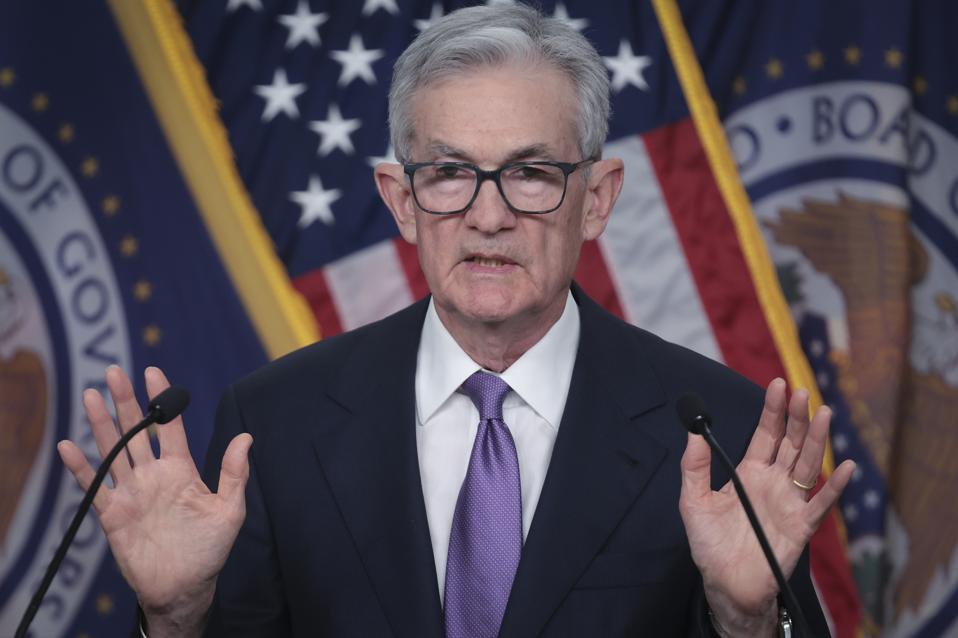The U.S. Federal Reserve is expected to hold interest rates steady at the conclusion of their next meeting on January 31. That’s the view of fixed income markets, which currently give just a 5% chance of a January interest rate cut according to the CME FedWatch Tool.
The Fed see rates holding at peak levels, too. The minutes from December’s Federal Open Market Committee meeting, released in January 2024, stated that. “In discussing the policy outlook, participants viewed the policy rate as likely at or near its peak for this tightening cycle, though they noted that the actual policy path will depend on how the economy evolves.”
However, the markets are currently somewhat ahead of Fed leaders in projecting interest rate cuts. The latest Summary of Economic Projections from December 2023, stated the median Fed forecast expected short-terms rates to be just above 4.5% by December 2024, whereas fixed income futures markets expect a greater likelihood that rates fall below 4% by then. The Fed hasn’t been willing to discuss interest rate cuts in any detail yet, though there’s a chance that’s coming at the January meeting.
Cooling Inflation
Inflation is down materially from peak levels. The December 2023 Consumer Price Index report may see an uptick in inflation compared to prior months. Even so inflation appears to be moving generally closer to the Fed’s 2% annual inflation goal.
For example, the Fed’s preferred inflation yardstick, the Personal Consumption Expenditures Price Index rose 2.6% on an annual basis for the latest November 2023 reading, or 3.2% once food and energy are removed. Inflation readings have continued to cool since the summer.
The Fed continues to watch services inflation, which has not moved down as much as the Fed hoped. That’s in part as the jobs market has held up strongly despite rising interest rates. Wage costs are a large component of delivering many services. However, elsewhere inflation has come down. Even wage growth is decelerating according to the Atlanta Fed’s Wage Growth Tracker. For November 2023, annual wage growth is 5.2% down from a peak of 6.7% last summer.
Still, there’s also an expectation that shelter costs may ease in reaction to higher interest rates. That’s something that the CPI series may pick up with a lag given the methodology uses.
Growth and Jobs
This cycle has been unusual in many respects. One such event is that despite higher rates the jobs market has remained generally robust. The unemployment rate remained broadly flat in 2023. January 2023’s unemployment rate was 3.4%, December’s was 3.7%. Job creation too has remained generally solid, with the economy continuing to add jobs throughout 2023 without the degree of slowdown that may have been anticipated given higher rates.
In a sense, that’s a slight concern for the Fed as inflation might resurface if the economy does cool. The Atlanta Fed’s GDP Now forecast calls for 2.5% GDP growth in Q4 2023, down from a particularly fast 4.9% annual growth rate in Q3.
What To Look For
After a prolonged pause in interest rates, the focus is on when interest rates might be cut in 2024. So far, Fed officials have primarily only been willing to go as far as moving away from emphasizing that future hikes are likely.
However, Fed leaders have not yet signaled that rate cuts are near, beyond a general expectation for lower rates by the end of 2024. Markets will be watching for clues on this from the Fed’s January meeting. Markets expect that the Fed will most likely embark on a series of progressive rate cuts starting in March as inflation continues to cool. However, the Fed, so far, has kept their options open.

